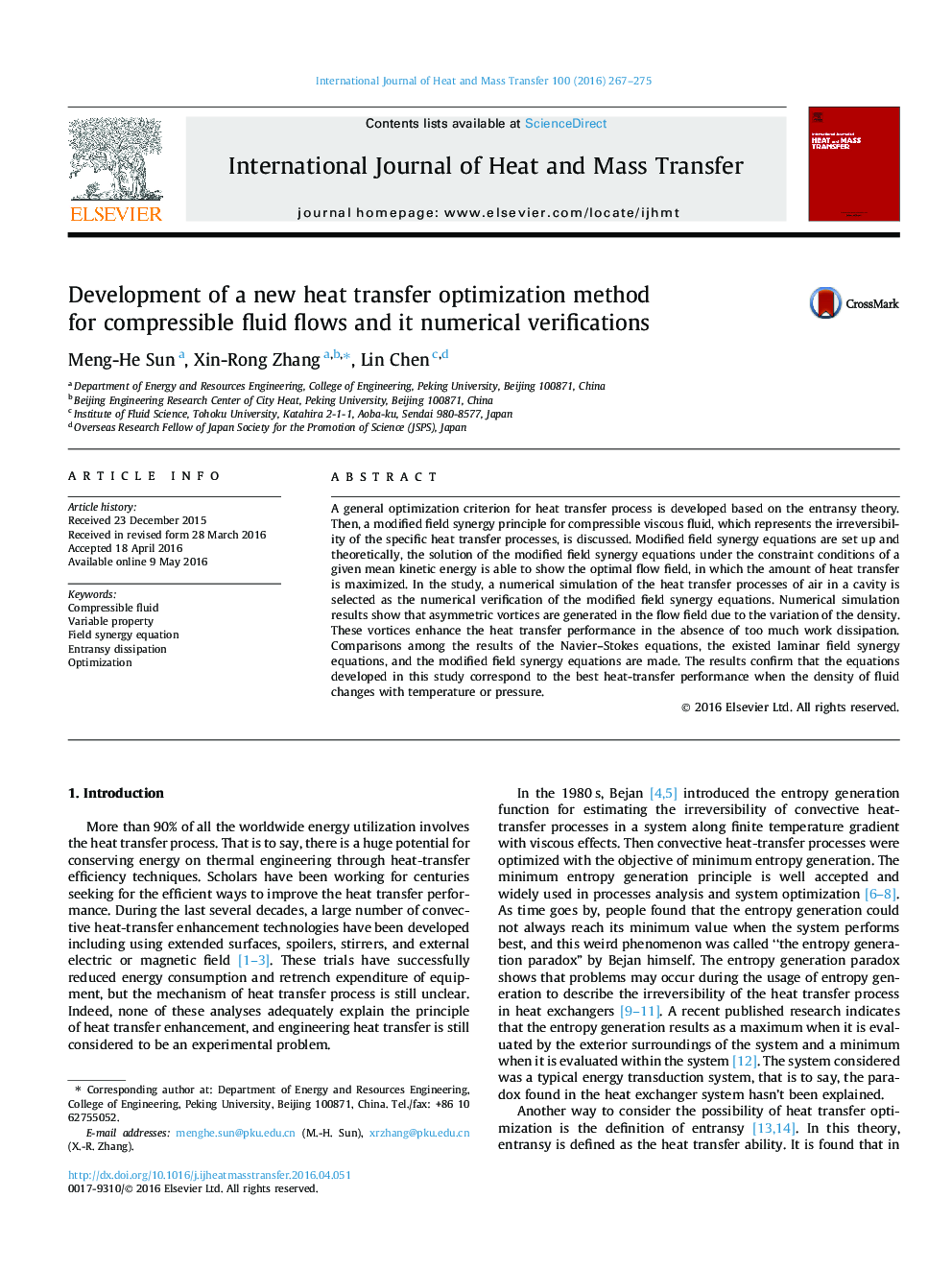| Article ID | Journal | Published Year | Pages | File Type |
|---|---|---|---|---|
| 656357 | International Journal of Heat and Mass Transfer | 2016 | 9 Pages |
•A general optimization criterion is developed based on the entransy theory.•A modified field synergy equation is derived.•The optimized flow field can be obtained by solving the modified field synergy equation.•Numerical verifications are done to prove the correctness of the method.
A general optimization criterion for heat transfer process is developed based on the entransy theory. Then, a modified field synergy principle for compressible viscous fluid, which represents the irreversibility of the specific heat transfer processes, is discussed. Modified field synergy equations are set up and theoretically, the solution of the modified field synergy equations under the constraint conditions of a given mean kinetic energy is able to show the optimal flow field, in which the amount of heat transfer is maximized. In the study, a numerical simulation of the heat transfer processes of air in a cavity is selected as the numerical verification of the modified field synergy equations. Numerical simulation results show that asymmetric vortices are generated in the flow field due to the variation of the density. These vortices enhance the heat transfer performance in the absence of too much work dissipation. Comparisons among the results of the Navier–Stokes equations, the existed laminar field synergy equations, and the modified field synergy equations are made. The results confirm that the equations developed in this study correspond to the best heat-transfer performance when the density of fluid changes with temperature or pressure.
